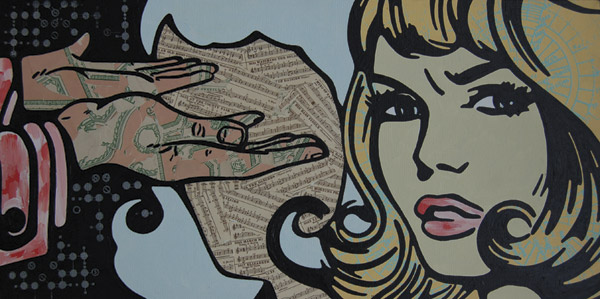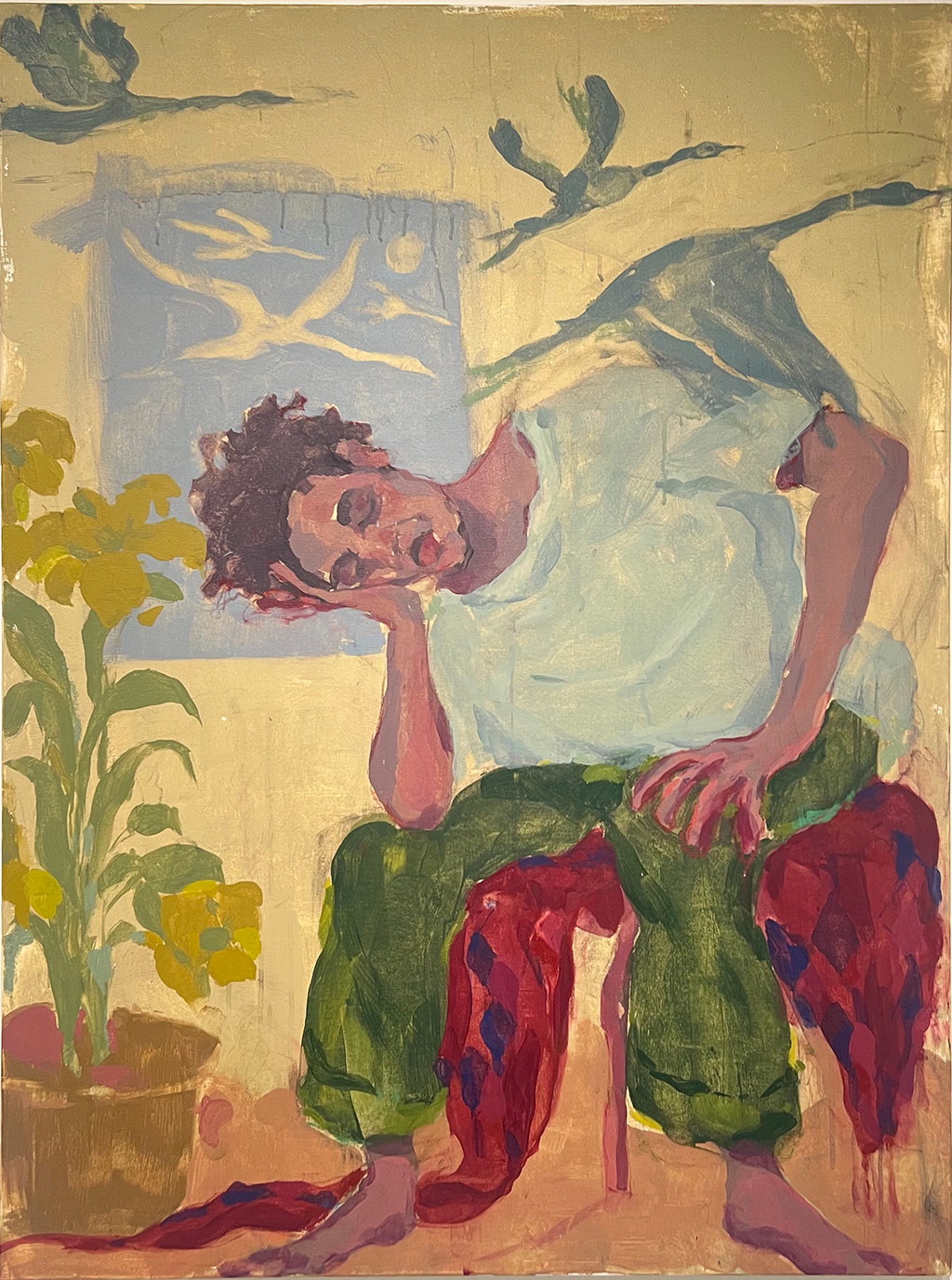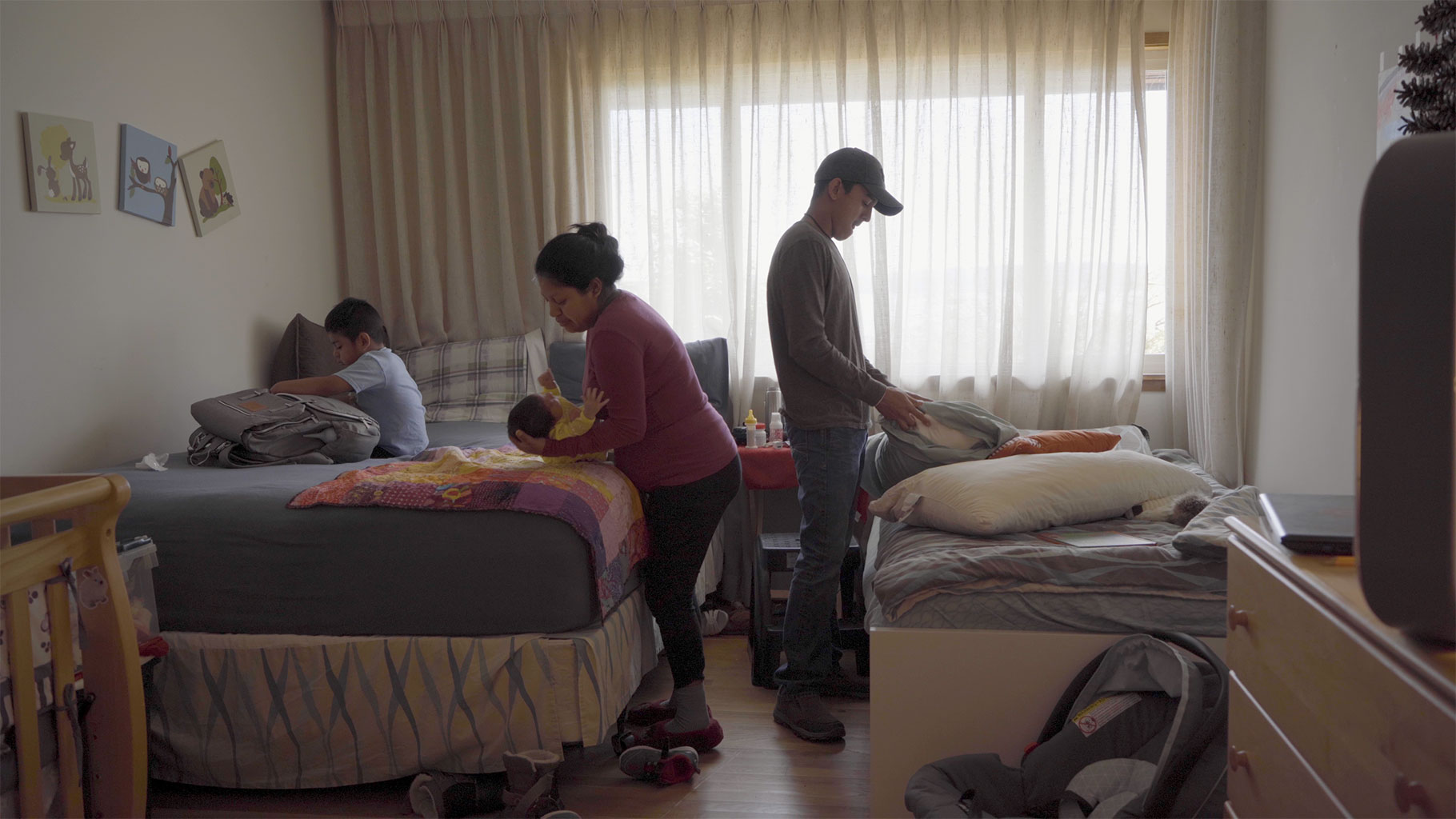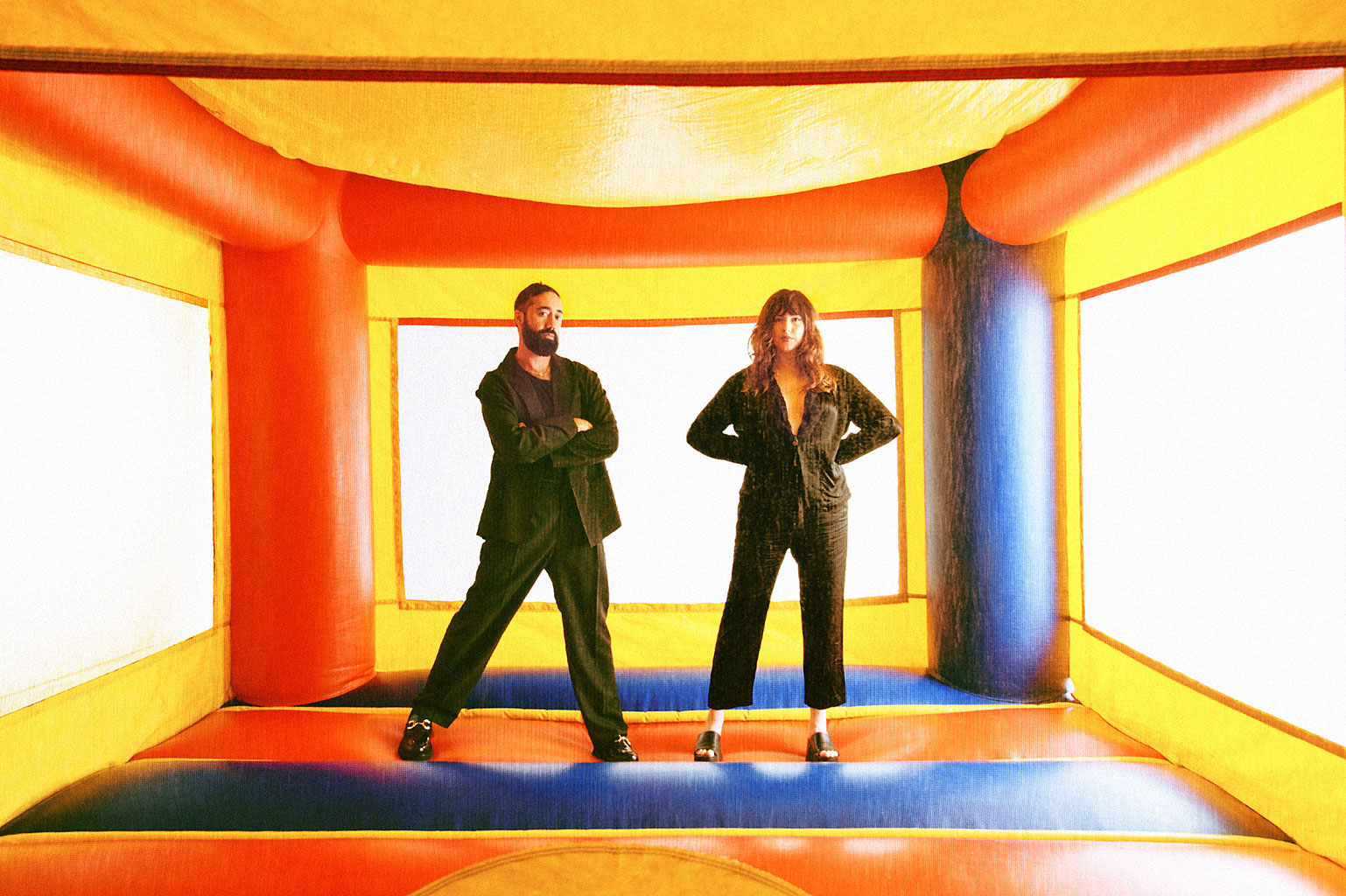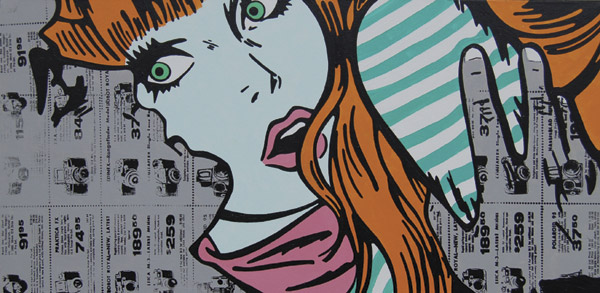 Did you always know you wanted to be an artist?
Did you always know you wanted to be an artist?
Yeah. When I was young, I wanted to be an astronaut, and I always thought that maybe I could be the first person to paint a picture in space, but I realized that being an astronaut’s a lot harder than it looks. Then I thought I could just be a painter. I wonder what it would [be like to paint in space]. I don’t think I’ll ever get that chance. Hopefully, one day.
What mediums do you use?
All my paintings are acrylic on canvas. My backgrounds are screen-printed. I also use a lot of vintage materials that I find. Maps… vintage songbooks… I found a box of receipts from the ’60s that I used, cause I liked how they were all faded and stained and cracked. I found that in the basement of an abandoned building, along with a mannequin leg.
For one particular piece — with the map of Japan, it’s just an old map that I found at a garage sale. For a while I did use some maps of Japan, because I wanted to symbolize a sort of clash of pop culture, where American pop culture is a lot different from Japanese pop culture. I think it mostly roots from American pop culture. That was pretty much what I was trying to say in that.
 I’ve read you learned a lot from your family members. Did they put you in the right direction?
I’ve read you learned a lot from your family members. Did they put you in the right direction?
I come from kind of a history of artists, you know? My grandfather was a painter, and he never displayed his art, though he did still life [works] of flowers. He’d do some scenes of Cuba, where he’s from. My great-grandfather, who’s from Spain, was a pretty well-known photographer who traveled the world and took pictures for postcards. Then he could hand-color them with a watercolor over the top. You can still find his postcards in random stores.
I noticed that most of your work is paintings of women. Why is this?
I mainly paint women because they’re just a beautiful form. There are a lot of things you can capture in painting a woman that you can’t necessarily capture when you’re painting a man. I do paint men every now and then, depending on how I’m feeling. A lot of times, I’ll paint women with men — not so much men alone. I like what I can get out of painting a woman –- from the eyelashes to the lips, the hair…
Can you tell me about the murals you’ve done for Washington State?
I have two murals in Tacoma, Washington. They’re glass murals. For one of them, I basically etched and hand-painted glass tiles to do a cityscape of Tacoma. That one is in downtown Tacoma. The second one is a large glass piece. I did the same thing where I painted on tile. [I don’t do a lot of glass etching]. I applied for a grant, and it specified for a glass art piece. I figured I could somehow turn it into a painting.
What was the first art piece you actually got recognition for?
A mural I painted in Tacoma when I was younger. It was actually done in an abandoned lot that was in the stadium district of Tacoma. People would tag and do little names and stuff on this wall which was really visible by the street. It always baffled me that people would always tag little names and letters, you know? Why don’t they do a real art piece instead of just putting letters everywhere? I bought about $100 worth of spray paint and I did a painting along the whole wall, and it was over 100 feet long and over 10 feet tall. It took me like three nights to do. The city ended up accepting it as public art for a few years. I just did it and they liked it, and they left it alone. When people would just tag and do little words like street names and what not, they would just cover it up.
Is all of your work self-taught?
I’ve never been to college or been schooled. I’ve been painting since I was a little kid, but I would say it was not until I was about 14 or 15 that I started painting everyday. I’m just self-taught. I feel like it’s the best way for me to work, because I’m not given everything that I want to ever have. I feel that when you go to school, they put a lot of tools through your hands that you’ll never be able to afford or use after school. You may not even have the motivation to produce with those tools. Everything I’ve done has started from the ground up.
END.
